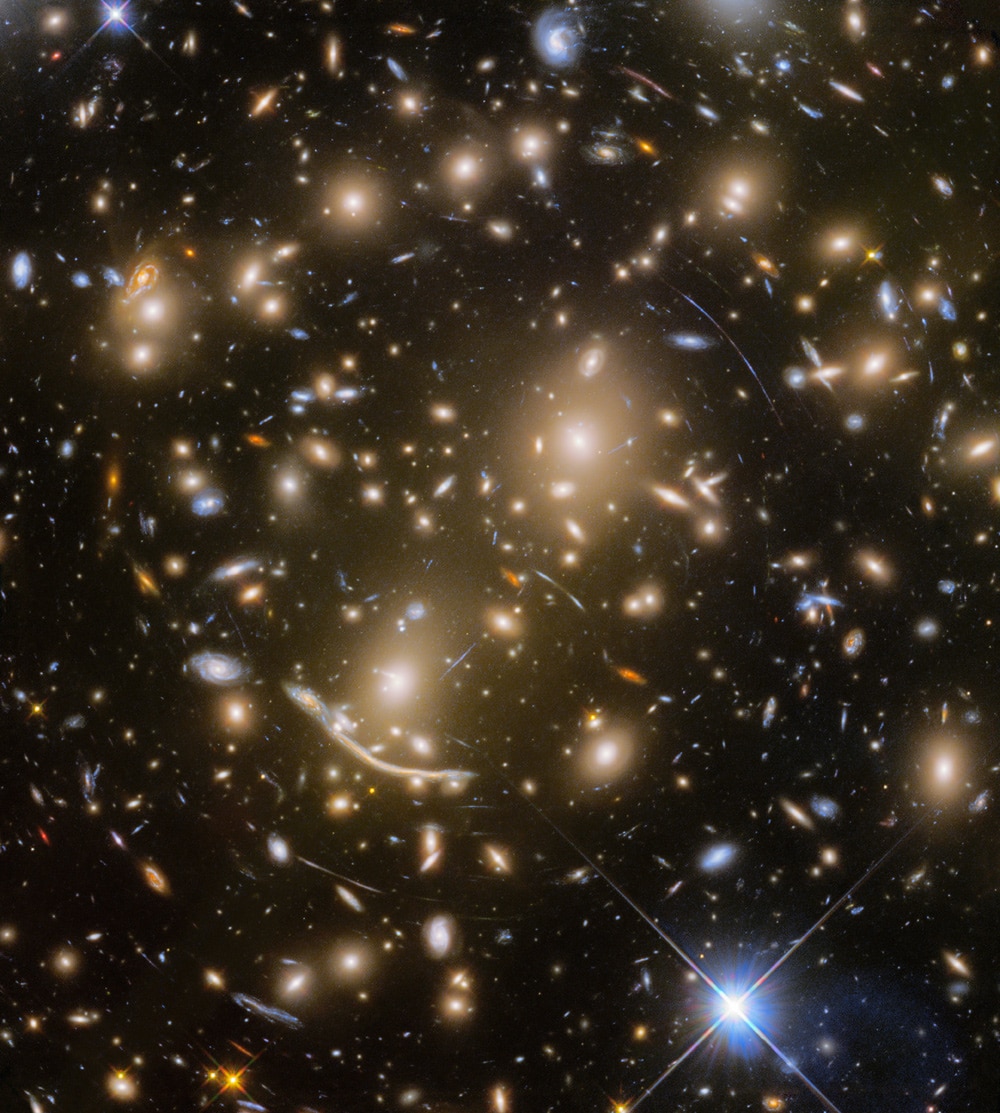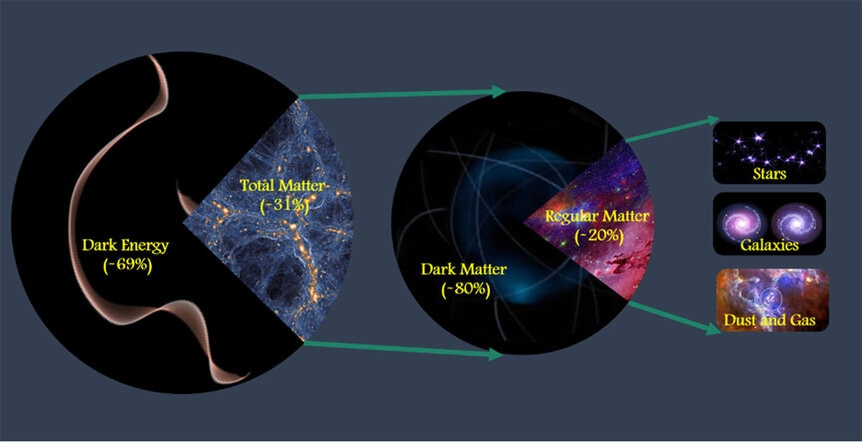Create a free profile to get unlimited access to exclusive videos, sweepstakes, and more!
What's the matter with the Universe? About 31%.

If you want to understand the Universe — and we do — you have to understand what's in it. I don't mean stars and planets and black holes and such. We need to be even broader.
How much energy is there in the Universe? How much matter? And to be a little more specific, what kinds of energy and matter?
We call this the mass/energy budget of the Universe. Like a household budget, it (hopefully) accounts for everything in it, divided by type. In the case of the Universe, we know it's made up of — in decreasing order — dark energy, dark matter, and normal matter. But how much of each?
A new study looked at just matter, and came up with a fairly narrow number: 31.5 ±1.3% of the Universe is made of matter (which, in turn, implies 68.5% is dark energy).
These numbers are pretty important. If the Universe had less matter, it would expand more rapidly — in a sense, the gravity of that matter slows the expansion.
This also has implications for stuff in the Universe, and not just the Universe itself. For example, in the early Universe gravity helped clump up matter, since it was attracted to itself. It condensed out of the hot soup of stuff, forming galaxies and clusters of galaxies. Had the matter budget been different, galaxies and clusters would look different, or may not have formed at all.
We owe our existence to these numbers.
In fact, it was galaxy clusters that the new work focused on. These are immense collections of entire galaxies, hundreds or thousands of them, all held together by their mutual gravity. Their structure depends on the density of matter in the Universe, so by examining them the scientists could figure out that density.
They developed a method to find clusters in as unbiased a way as possible. They looked at a staggering 700,000 galaxies, then examined their locations and motions in space to see if they belonged to clusters. From this sample they selected 756 nearby galaxy clusters (up to about 1.6 billion light years away, so "nearby" is relative) to use in their analysis.
Then they found what's called the cluster mass function, which is the number of clusters out there in the Universe in a given volume of space for a given mass of the cluster. So in some part of the Universe you might see lots of low-mass clusters, fewer middleweight ones, and a smaller number of truly ginormous ones, for example. This distribution is sensitive to the density of matter in the Universe, and is complicated by things like the fact that the density changes over time as the Universe expands, as well as the difficulty in determining the mass of the cluster.
That last bit is a toughie. There are a lot of ways to estimate the mass of a cluster, many of which are statistical in nature (looking at lots of clusters to average out noisy statistics). These introduce other issues, though, making this difficult. In this case, the scientists opted to use what's called the virial method to get the mass — as galaxies move around in a cluster, they interact and exchange energy (faster ones pull on slower ones, for example, speeding them up). This depends on the total mass of the cluster, and provides a pretty good way to get that number.
They then ran the numbers to see what cosmic mass density they needed to explain the mass distribution of clusters, and got 31.5% (using just their data they got 31% with an uncertainty of about 2.3%, but combining their results with other studies got the slightly more accurate figure).
In general, this number is a little bit higher than most other methods (it ranges from 25–35% depending on how you measure it), but not alarmingly so. They claims theirs is the most accurate measurement of this number ever made, but I'll let other experts hash that claim out.
It also allows you to calculate the average density of matter in the Universe, and it's about 10-23 grams per cubic meter. That's teeny. It's the equivalent of about 6 hydrogen atoms per cubic meter. For comparison, at sea level air has about 1,200 grams per cubic meter, or roughly 1025 atoms per cubic meter — a factor of about a septillion (or a million million million million) more. Space is really empty.
I'll note too this is total matter, including dark and "normal" matter. The budget of matter itself in the Universe is about 5-to-1 dark to normal matter, so roughly an 84/16 split. That ratio isn't hugely well known though. One idea, incidentally, is that dark matter is made of axions, which are a theoretical particle with very low mass. If that's the case, then that cubic meter of space would have more like 1 hydrogen atom in it and many many billions of axions.
So there you go. This new study, should it pan out, is another step to getting all this straightened out. Every day we get a little bit closer to figuring out, well, the Universe, and why we're here at all. It may seem a little esoteric, but look around you. All that stuff you see exists, and it does so because of how the Universe works. Looking under its hood is one of the coolest things humans do.




























